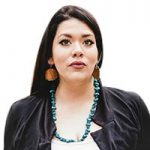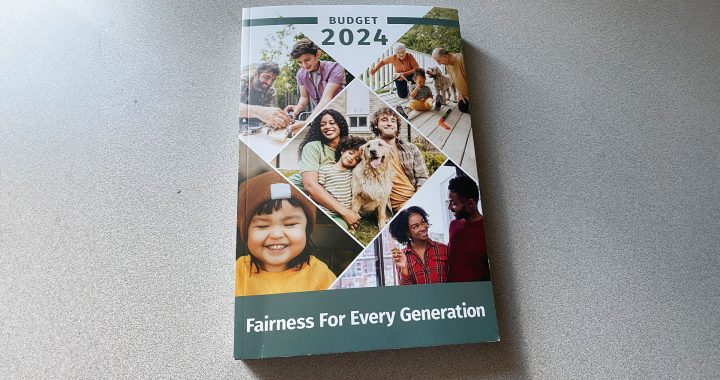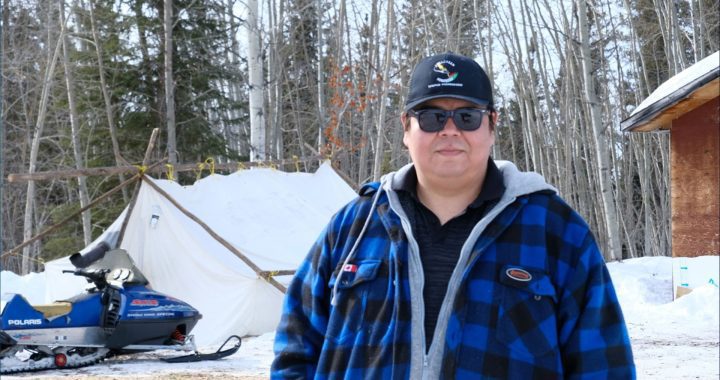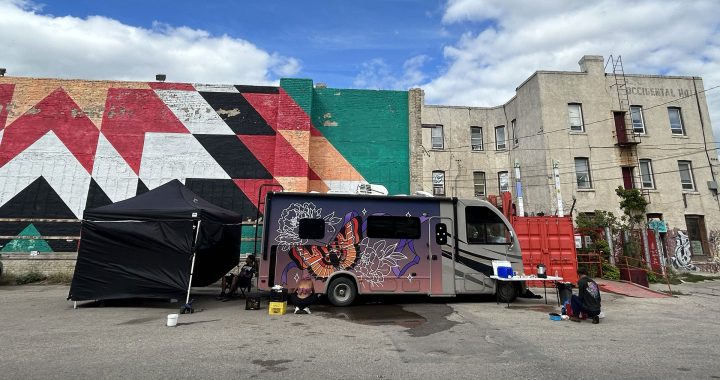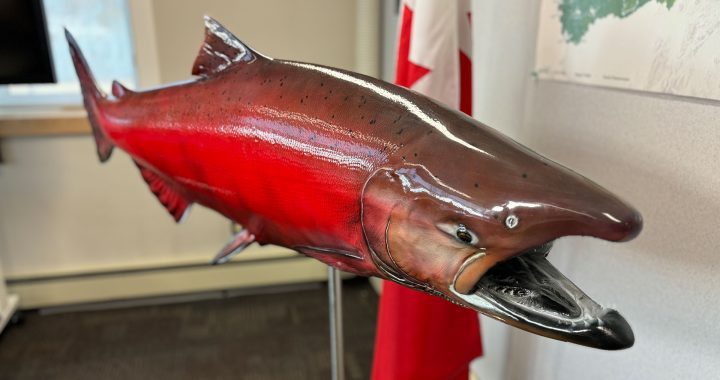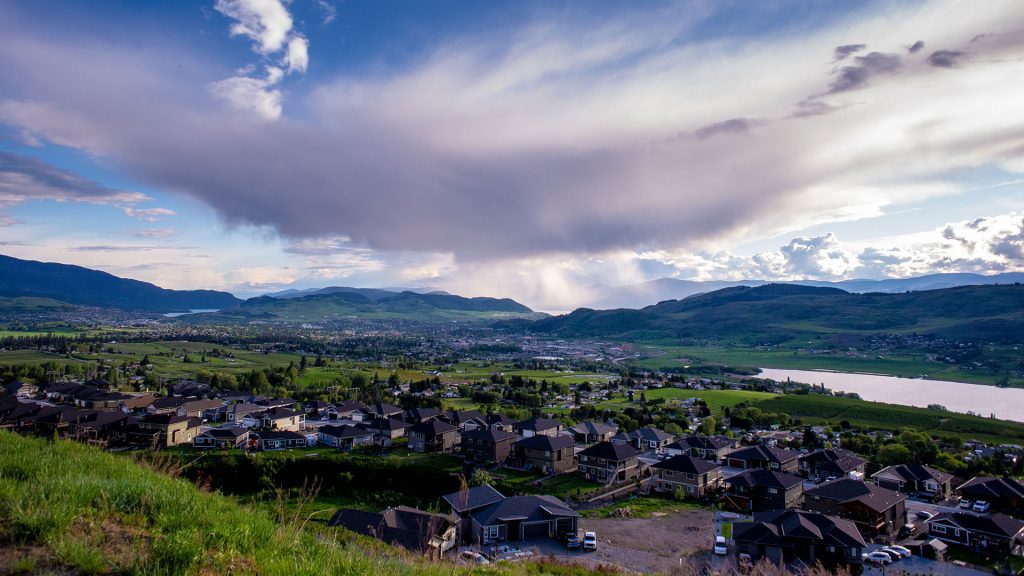
Vernon B.C. as seen from the traditional gathering place of the Syilx people, Silver Star/BX area, who now reside on the other side of the hill to the left of this image.
When you enter the north end of the Okanagan Valley you find a vibrantly coloured landscape with gently rolling hills and sparkling waters.
It is one of these rolling hills that divides the Okanagan Indian Band (OKIB) and the City of Vernon, B.C.
“If you look at where we’re situated we have a whole hillside hiding us,” says Rachel Marchand, an OKIB member and intergenerational survivor of residential school.
When Marchand, a college instructor, leaves OKIB and heads into Vernon she feels she has to shapeshift.
“In community, you have to be a really good strong Indian and when you go to town you have to hide that, mask that, and be a really good white person,” she explains.
Vernon is a predominately white town with a population of 38,835 according to the 2016 census. And according to the statistics, 85 per cent of the population identifies as people of European decent.
While politicians in cities like Vancouver and Victoria have made strong commitments to reconciliation, similar efforts have, until now, not been made by the City of Vernon.
But OKIB Chief Byron Louis and Vernon Mayor Victor Cumming say they are working on building a stronger relationship between OKIB and the city.
The two began regular meetings on June 18, 2020 and hope to continue them on a monthly basis in order to stay in communications about what is happening for both communities.
Meanwhile, local schools, healthcare facilities, community organizations, and the local community college have spearheaded reconciliation efforts through engagement with the local Syilx Peoples in the first step of indigenizing spaces.

Local history
OKIB has a membership of over 2,000 people making it one of the largest First Nations communities in the province.
The community has a land-base of 112.82 square kilometers, which was established by Indian Reserve Commissioner Peter O’Reilly between 1888-1893.
O’Reilly was appointed by the federal government to create the boundaries of the Okanagan Indian Band as part of the federal government’s initiative to segregate and assimilate First Nations Peoples.
The purpose of establishing reserves (also known as First Nations communities), was, “to do away with the tribal system and assimilate the Indian people in all respects with the other inhabitants of the Dominion as speedily as they are fit to change,” writes John A. Macdonald, the first prime minister in Canada in a memorandum on Jan. 3, 1887.
“One of the first actual contact dates was recorded in 1805 at Fort Kamloops. The Hudson’s Bay ‘brigade trail’ led right through the Okanagan Nation’s territory, from Fort Kamloops to Fort Colville, presently known as Colville, Washington, U.S.A,” explains the OKIB website.
OKIB is part of the larger Okanagan Nation territory.
The traditional territory of the Okanagan Nation is over 69,000 square kilometres.
“The northern area of this territory was close to the area of Mica Creek, just north of modern day Revelstoke, B.C., and the eastern boundary was between Kaslo and Kootenay Lakes.
The southern boundary extended to the vicinity of Wilbur, Washington and the western border extended into the Nicola Valley,” writes the Okanagan Nation Alliance (ONA) on their website.
Syilx Peoples, the people of the Okanagan Territory, have experienced residential schools, the ‘60s Scoop, Indian Day Schools, territorial displacement, the millennial scoop, and other efforts to assimilate them.
“A lot of people in Vernon still don’t know there is a reserve, they still don’t know about residential schools, and don’t know what the systemic racism was that made the government place our reserve away from the community,” says Marchand.
“I find that there are definitely allies in Vernon and the area, however, there is still the onus being put onto Indigenous people to teach them.”
So where do the communities go from here?
“Stim aspʔús? [What is on your heart?]”
This is the question that OKIB Chief Louis wanted to ask Vernon Mayor Victor Cumming.
On the heels of the fifth anniversary of the Truth and Reconciliation Commission’s final report and calls to action, the two are now having discussions about where the relationship between the communities lies.
OKIB and the City of Vernon both say that they are in the early stages of developing a working relationship that will open lines of communication, but that doesn’t come without its challenges.
“I think it’s going through some trying times, which is to be expected. And both sides are still trying to work through how to work together,” says Louis.
Louis explains that the OKIB community has a lack of capacity to engage in meaningful conversations and consultation processes.
“That’s one of the problems with the band is that we lack the capacity to ensure that we can fully engage. Because you can talk about political issues at a table but you still need the technical support through various positions,” shares Chief Louis.
Louis raises a concern that is common throughout many Indigenous communities. It is a lack of being able to participate in the economy and give proper responses without the resources to do so.
“How do you generate the necessary information on a technical level… then being able to talk about that at the other table which is political?,” says Louis.
The inability to actively participate and engage in consultation with the city has certainly caused some difficult conversations to take place.
“City of Vernon and the Okanagan band share a long boundary and one of the reserves. We won’t talk about reserves in their significance, but one reserve is just a hole-in-a-donut. Completely surrounded, we share a beach and, so it’s a physically, geographically and integrated relationship,” says Cumming.
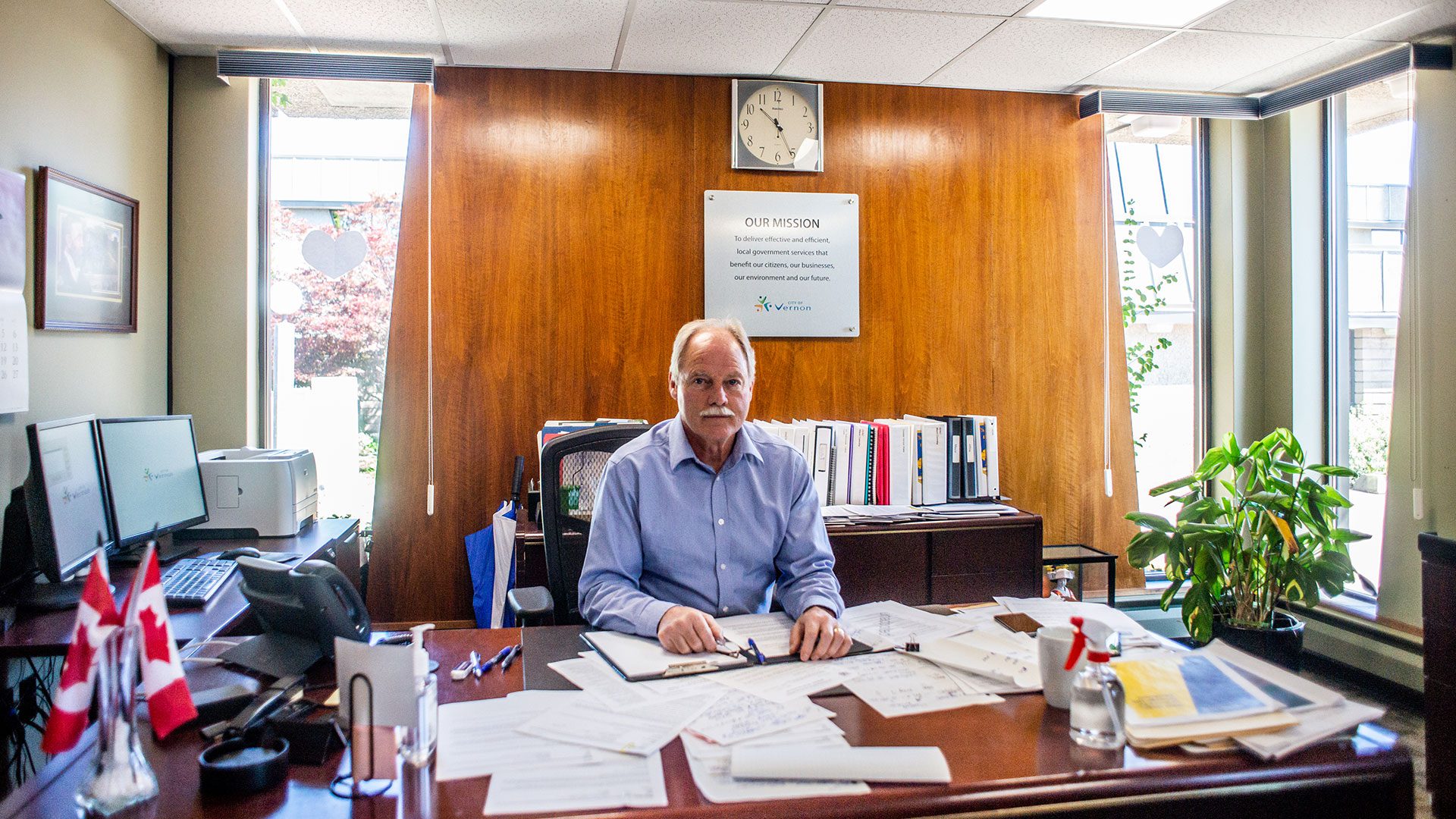
Cumming feels the working relationship with the Okanagan Indian Band is in its infancy.
“I think that it’s at the beginning. I think it’s very much that formal relationship where we’re at the beginning and that’s the forming stage, and in that forming stage we’re trying to work things out.”
“There are some expectations on both sides that need to be enhanced or developed, so they’ve got some expectations, I’m sure they feel like they haven’t been met,” says Cumming.
“But we have expectations that I’m sure we felt haven’t been met. But that’s good, that’s the forming component.”
The two leaders have come to the agreement that as of June 2020, they will begin to have in-person meetings once a month to talk about projects within the two communities.
Cumming says that the City of Vernon, is taking steps forward to share the history of the land.
“There’s names of things, there’s historic roots, there’s historic uses that got sidelined and that needs to be returned,” he says.
In recognizing where the relationship is now and how much farther the two communities need to go to formalize a working relationship, Cumming hopes Okanagan Nation members, “feel free to show leadership, show guidance, show direction, and it’s welcomed.”
Louis hopes that his community continues to feel safe and valued within their traditional territories.
“When you are walking in your world or their world you are still Sqilxw. That is who we are. There is no changing that.”
And for Marchand, who will continue to drive in and out of two worlds, she hopes that people in Vernon will build empathy and understanding.
“You have to connect to be able to have that emotion, that empathy, to understand that, to understand where we are coming from,” says Marchand.
Kelsie is reporting from the Okanagan for The Discourse as part of the Local Journalism Initiative. Kelsie is a Sqilxw (Syilx/Indigenous) photographer and storyteller who was born and raised in Inkumupulux (the head of Okanagan Lake). Her work is featured on IndigiNews.com, a new platform created by The Discourse and APTN




